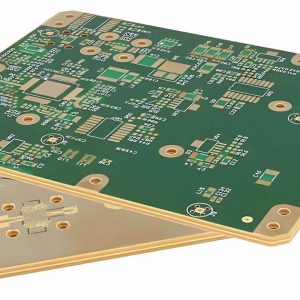The journey from a validated, working prototype to a full-scale, market-ready product is one of the most critical and challenging phases in an electronic device’s lifecycle. This pivotal transition is known as the New Product Introduction (NPI) process. It’s far more than simply flipping a switch from “prototype” to “production.” NPI is a structured, multi-faceted bridge that ensures a product is not only functional but also manufacturable, reliable, and cost-effective at scale. A poorly managed NPI can be fraught with unforeseen delays, budget overruns, and quality issues that can jeopardize a product’s launch. Conversely, a well-executed NPI, navigated in close collaboration with an experienced Contract Electronics Manufacturer (CEM), is a powerful strategic advantage that can significantly accelerate time-to-market and ensure long-term success. As a dedicated American manufacturing partner, BENCOR specializes in guiding our clients through this complex journey, turning innovative American designs into world-class products.
What is the New Product Introduction (NPI) Process? More Than Just Manufacturing
It’s essential to differentiate the NPI process from both early-stage prototyping and mature, high-volume manufacturing. Prototyping is about answering the question, “Does my design work?” Mass production is about answering, “How many can we build today?” The NPI process sits squarely between them, answering the most crucial question of all: “How do we build this new product correctly, consistently, and efficiently at the required volume?”
The primary goals of a structured NPI process are comprehensive and foundational:
- To meticulously analyze, finalize, and stabilize the product’s design, optimizing it for efficient manufacturing and assembly (DFM/DFA).
- To develop, document, and perfect robust and repeatable manufacturing processes, from solder profiling to final system testing.
- To establish, qualify, and secure the entire supply chain for every single component on the Bill of Materials (BOM).
- To ultimately ensure that the final product can be built to meet all quality, cost, and volume targets before committing to a full-scale production launch.

The Key Phases of a Successful NPI Journey
A successful NPI journey is not a single event but a series of well-defined phases. Each stage builds upon the last, systematically reducing risk and increasing confidence as the product moves closer to market.
Phase 1: Planning and Early Engagement (The Pre-Manufacturing Blueprint)
- The most successful NPI processes begin long before the first production unit is assembled. The key is early engagement with your CEM partner. Involving a manufacturer like BENCOR during the late stages of the design process provides access to decades of real-world manufacturing expertise.
- During this phase, our teams collaborate on several critical activities. We perform a detailed Design for Manufacturability (DFM) and Design for Assembly (DFA) analysis, identifying any aspects of the design that could be difficult or costly to produce and suggesting improvements. We conduct a thorough BOM scrub, analyzing every component for risks related to cost, availability, lifecycle status (obsolescence), and sole-source vulnerabilities, and proactively suggest proven alternatives. Together, we also develop a preliminary test strategy to ensure the final product can be effectively and efficiently verified.
Phase 2: Prototyping and Manufacturing Process Validation
- While earlier prototypes proved the concept, the NPI prototype build has a different purpose. This build, typically a small quantity, is less about validating the design’s function (which should be mostly stable) and more about validating the manufacturing process itself.
- This is the first time the CEM will build the product. It’s a crucial opportunity to create initial work instructions, test component placements, and provide a critical feedback loop to the design team. We might discover, for example, that a specific connector is difficult to install or that a component’s location makes it difficult to solder reliably. This invaluable, hands-on feedback allows for final, minor revisions to the design to optimize it for a smoother production flow.
Phase 3: The Pilot Run and Process Optimization
- After incorporating feedback from the prototype build, the next step is a pilot run. This involves producing a larger quantity of units (e.g., 50-100 pieces) using the actual production line, tooling, and fixtures that will be used for mass production. This is the final “dress rehearsal” before the official launch.
- The goals of the pilot run are to finalize and validate all manufacturing and assembly work instructions, optimize the programming for automated equipment like SMT pick-and-place machines, refine test fixtures and procedures, and gather real-world data on production line yields, cycle times, and potential bottlenecks. Successfully completing this phase provides high confidence that the product is truly ready for scalable production.
Phase 4: Production Ramp-Up and Release
- With a stable design and a proven process, the product is ready for launch. The production ramp-up begins, with manufacturing volumes gradually increasing to meet initial market demand. During this phase, quality metrics and production yields are continuously monitored to ensure everything remains stable as the volume scales. The supply chain is actively managed to ensure a steady flow of materials, and all documentation is formally released and placed under revision control.
Critical Success Factors for a Smooth NPI Process
Across all these phases, several key factors consistently determine the success of a new product introduction.
A True Collaborative Partnership
NPI is inherently a team sport. It cannot be a “throw it over the wall” transaction. Success requires a deep, collaborative partnership and constant, transparent communication between the customer’s engineering team and the CEM’s project management, engineering, and procurement teams. This is especially true when working with a domestic partner like BENCOR, where real-time collaboration without time zone barriers can rapidly solve problems.
Comprehensive and Accurate Documentation
Incomplete, inaccurate, or ambiguous documentation is the number one cause of NPI delays and errors. A complete data package—including finalized Gerbers, a clean and detailed BOM, precise assembly drawings, and clear test procedures—is absolutely essential for a smooth and efficient process.
Prioritizing Early DFM/DFA Analysis
The greatest opportunity to improve a product’s quality and reduce its cost occurs during the earliest stages. Investing time in a thorough DFM/DFA review during Phase 1 yields immense returns by eliminating costly redesigns, improving manufacturing yields, and simplifying the assembly process down the line.
A Robust and Vetted Supply Chain
A product cannot be built without its components. A CEM with deep supply chain expertise, strong relationships with authorized distributors, and proactive strategies for managing component risk is an invaluable asset, especially in today’s volatile market.
The BENCOR Advantage: Your American NPI Partner
At BENCOR, we view ourselves as more than just a manufacturer; we are an NPI partner dedicated to ensuring our customers’ innovations reach the market successfully. Our entire process is structured to support this journey.
Our experienced project managers serve as your single point of contact, expertly guiding your project through every NPI phase with clear and consistent communication. Our in-depth DFM/DFA expertise, built upon decades of American manufacturing experience since 1992, allows us to provide the critical feedback that optimizes your product for high-quality, efficient production.
The agility and flexibility inherent in our US-based operations are a significant advantage during the dynamic NPI process. Our close proximity to our domestic partners enables easier collaboration, faster shipment of prototypes and pilot runs for quicker feedback cycles, and the ability to resolve issues in real-time. This is about leveraging the power of American ingenuity and teamwork to compete and win. A well-executed NPI process is a key competitive advantage, and keeping that entire innovation and production launch cycle on US soil protects intellectual property and ensures that American designs are brought to market with the speed and excellence they deserve.
Conclusion: The New Product Introduction process is the critical bridge that transforms a promising design into a successful, scalable product. Navigating this journey effectively requires a structured, phased approach, a commitment to clear communication and documentation, and, most importantly, a true collaborative partnership with a capable and experienced Contract Electronics Manufacturer. At BENCOR, we are more than just a factory; we are an expert NPI partner, deeply invested in the success of our clients. We are committed to providing the guidance, expertise, and manufacturing excellence required to successfully launch your next product and ensure its long-term success in the marketplace.





